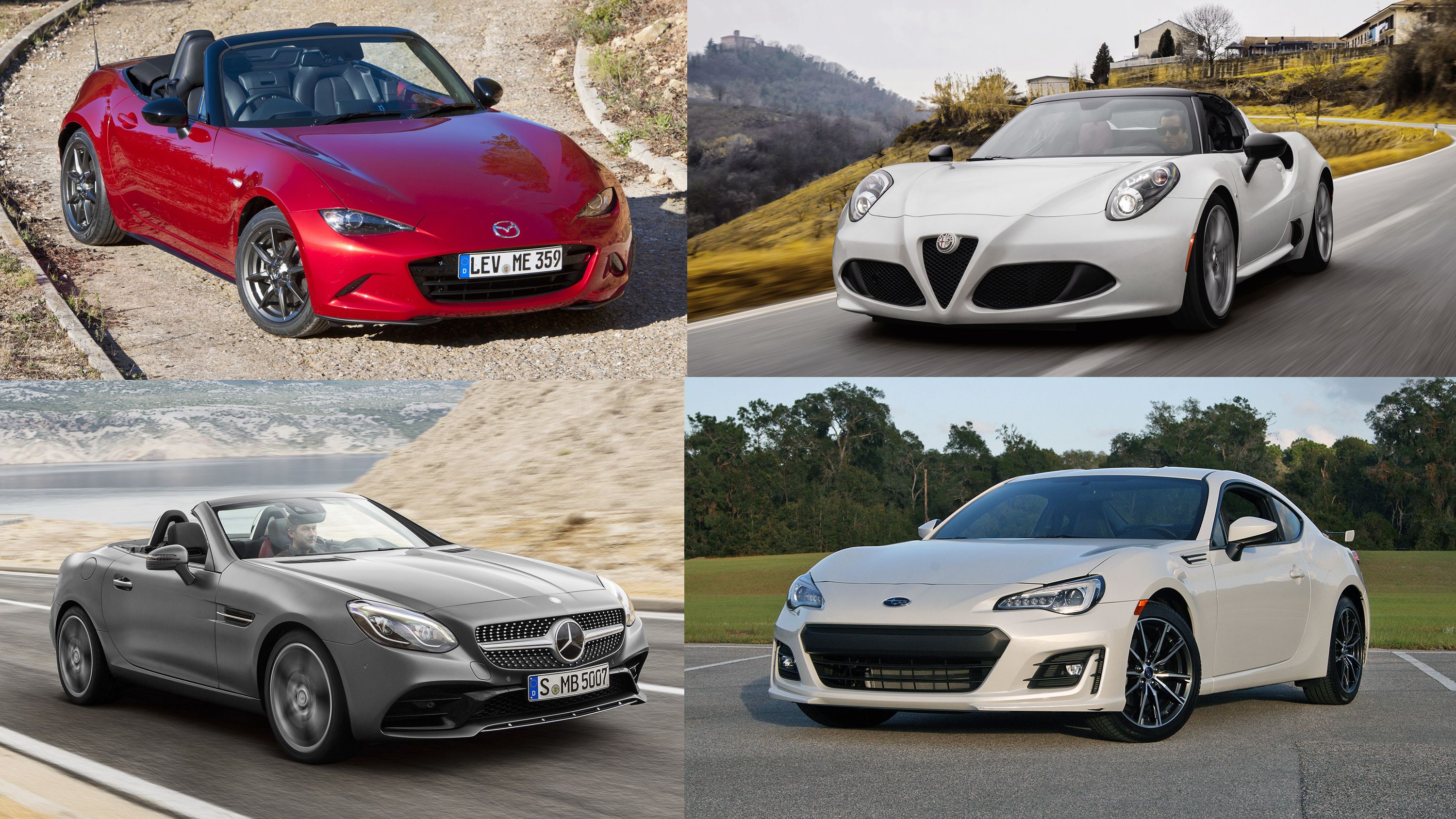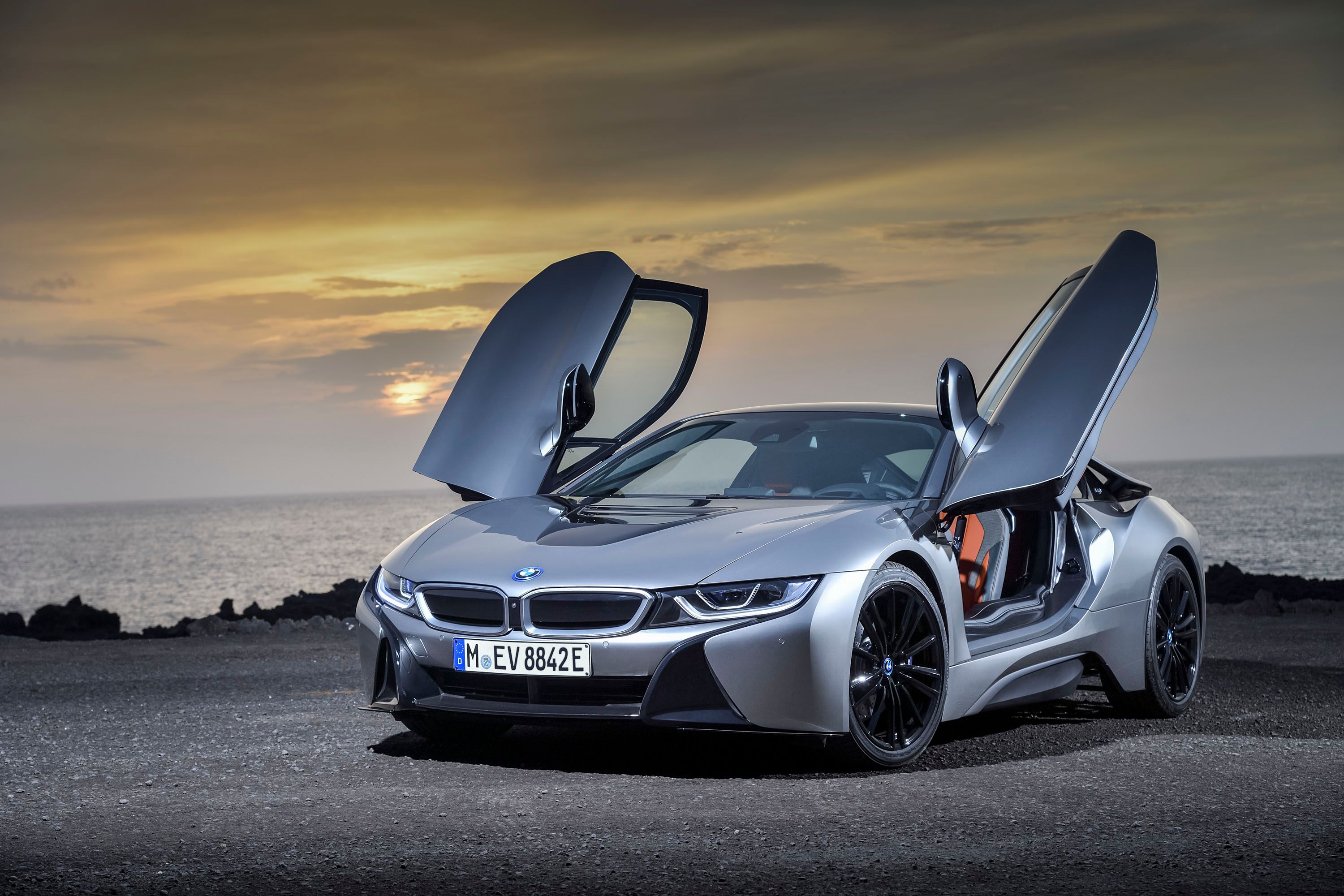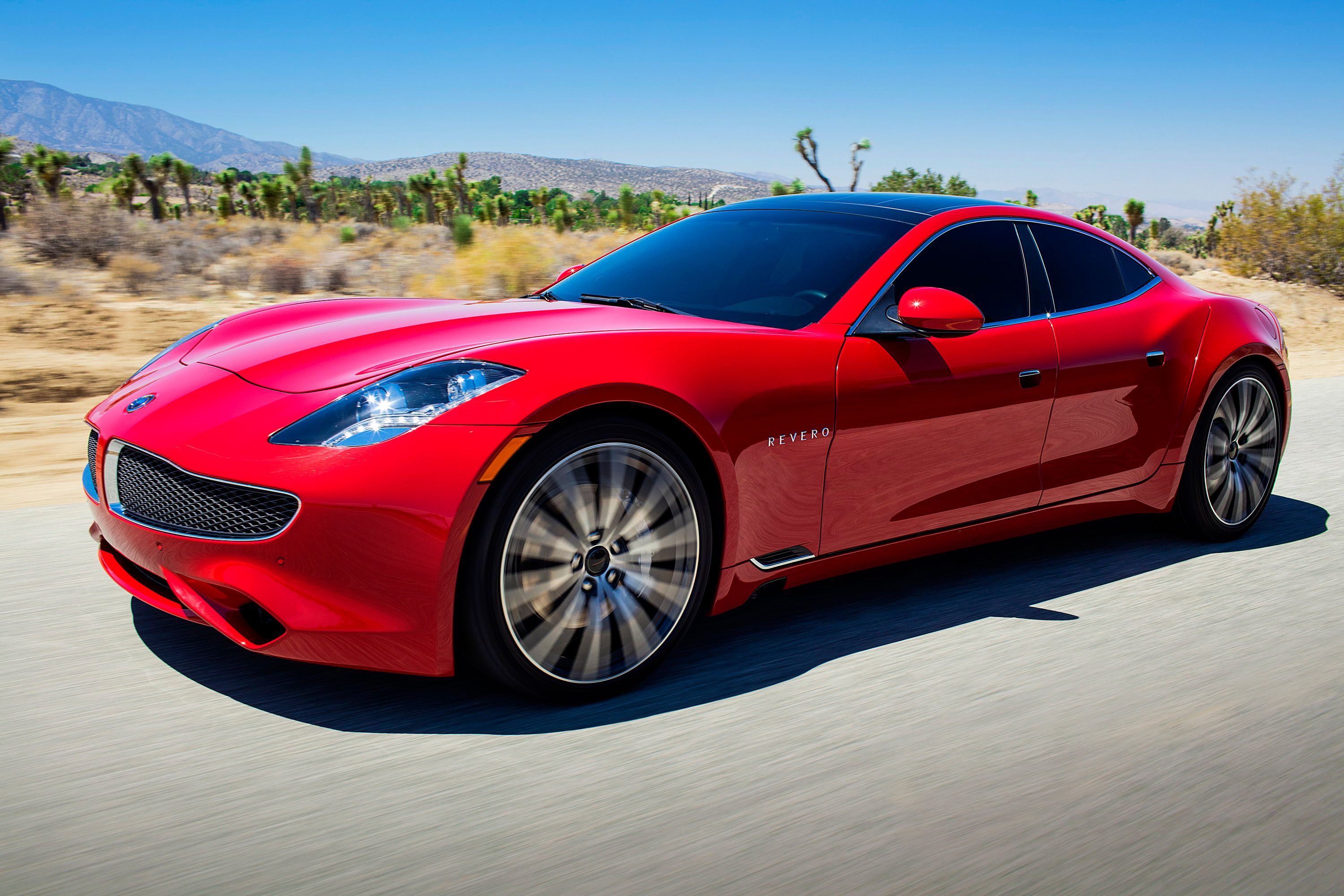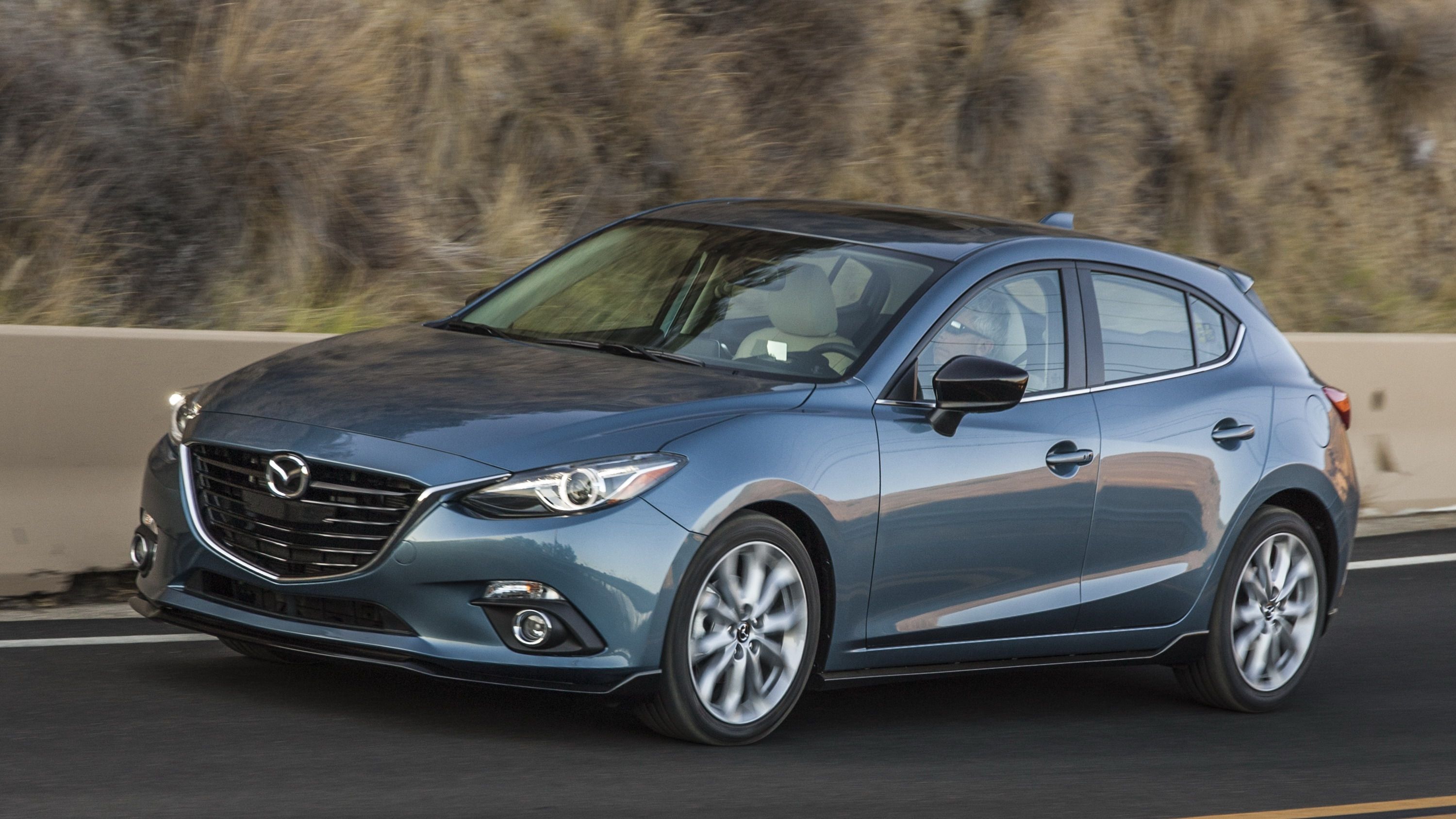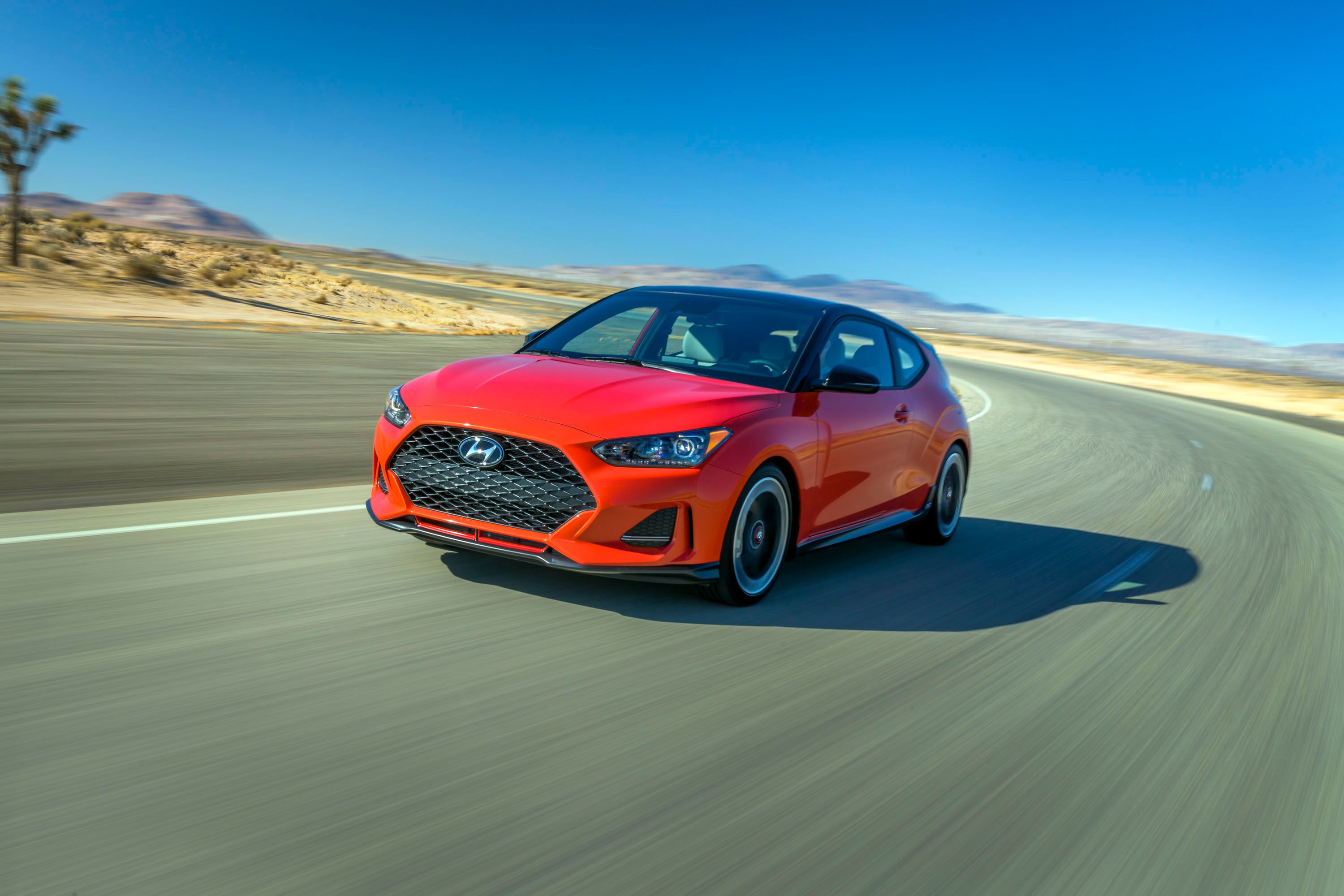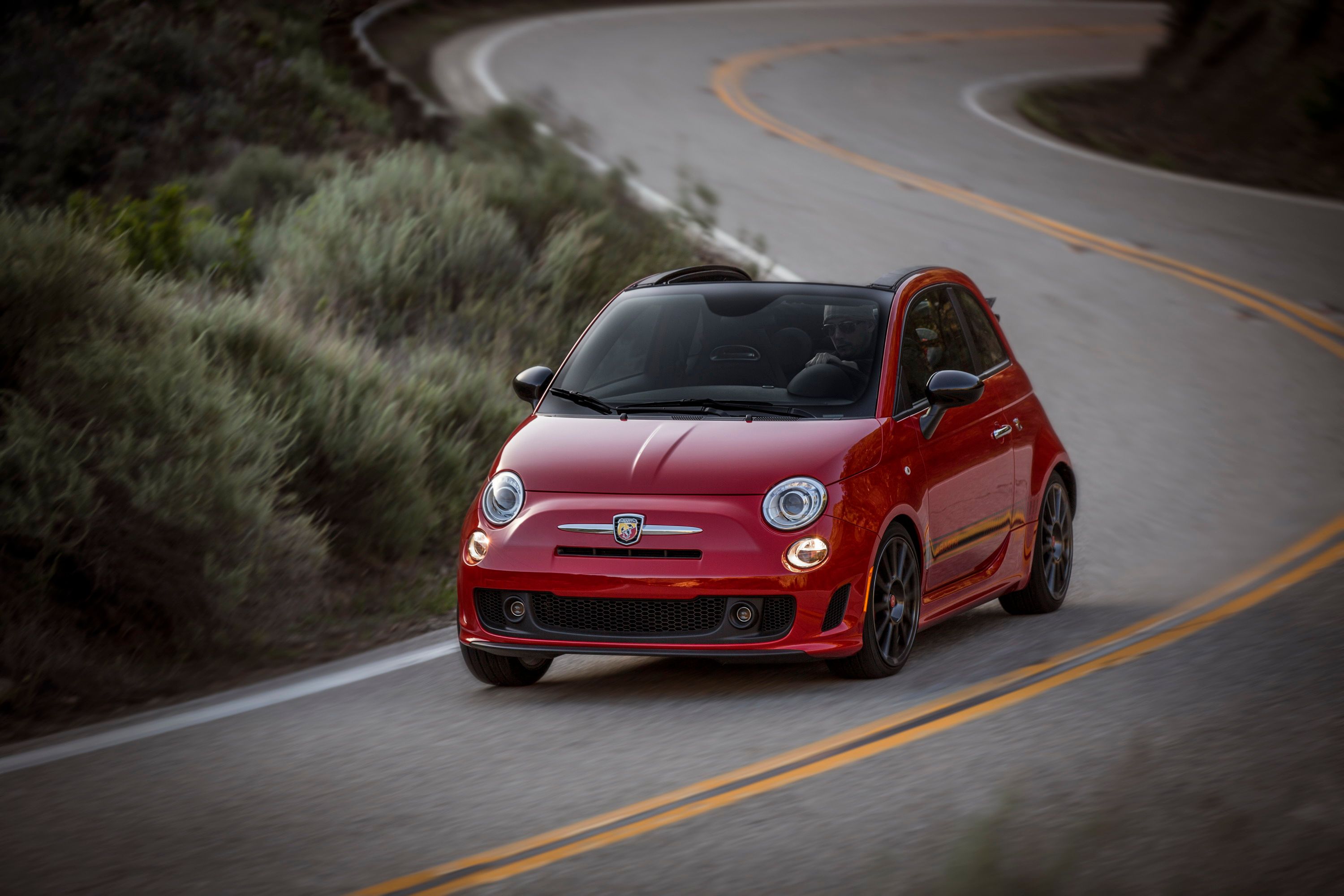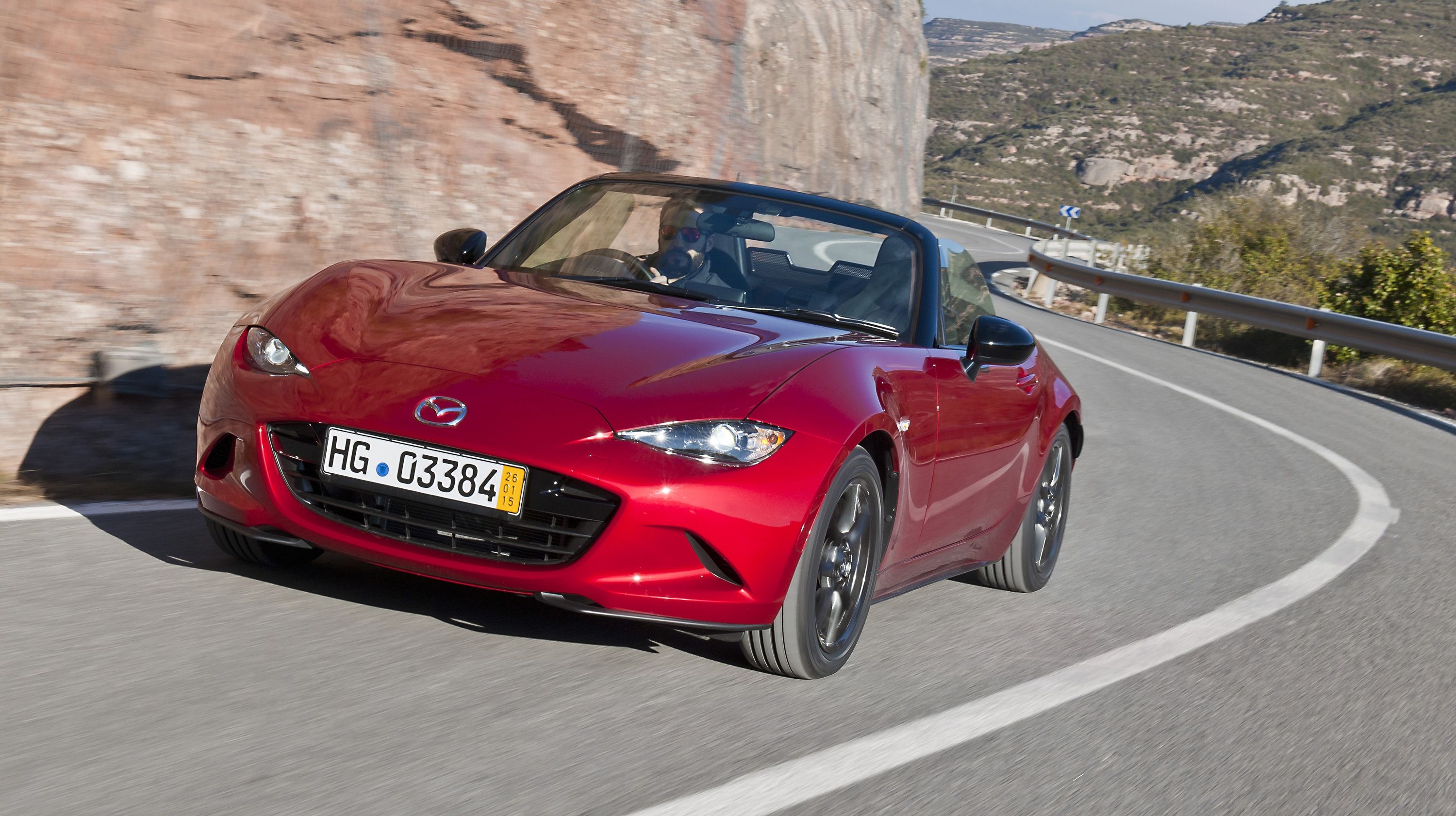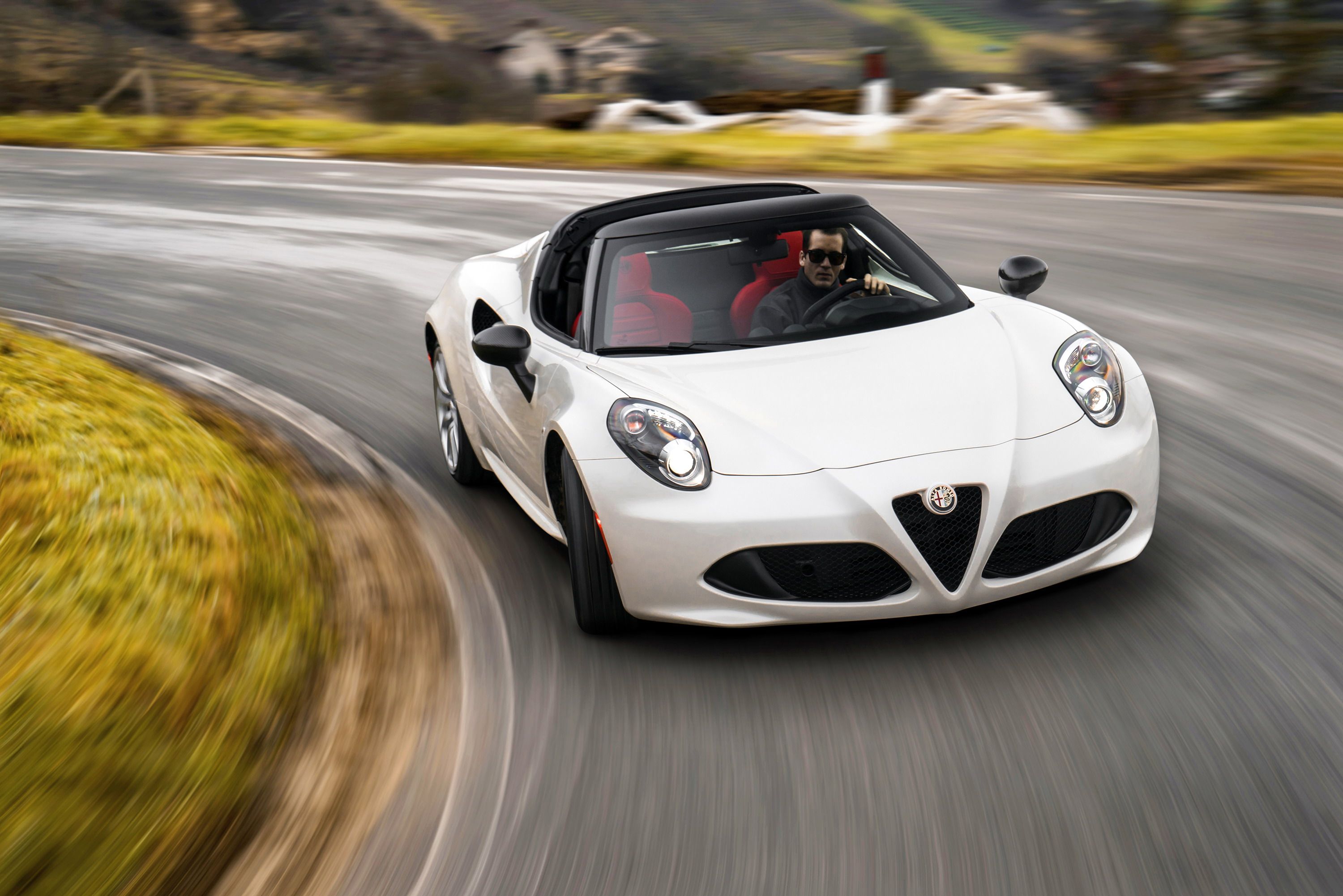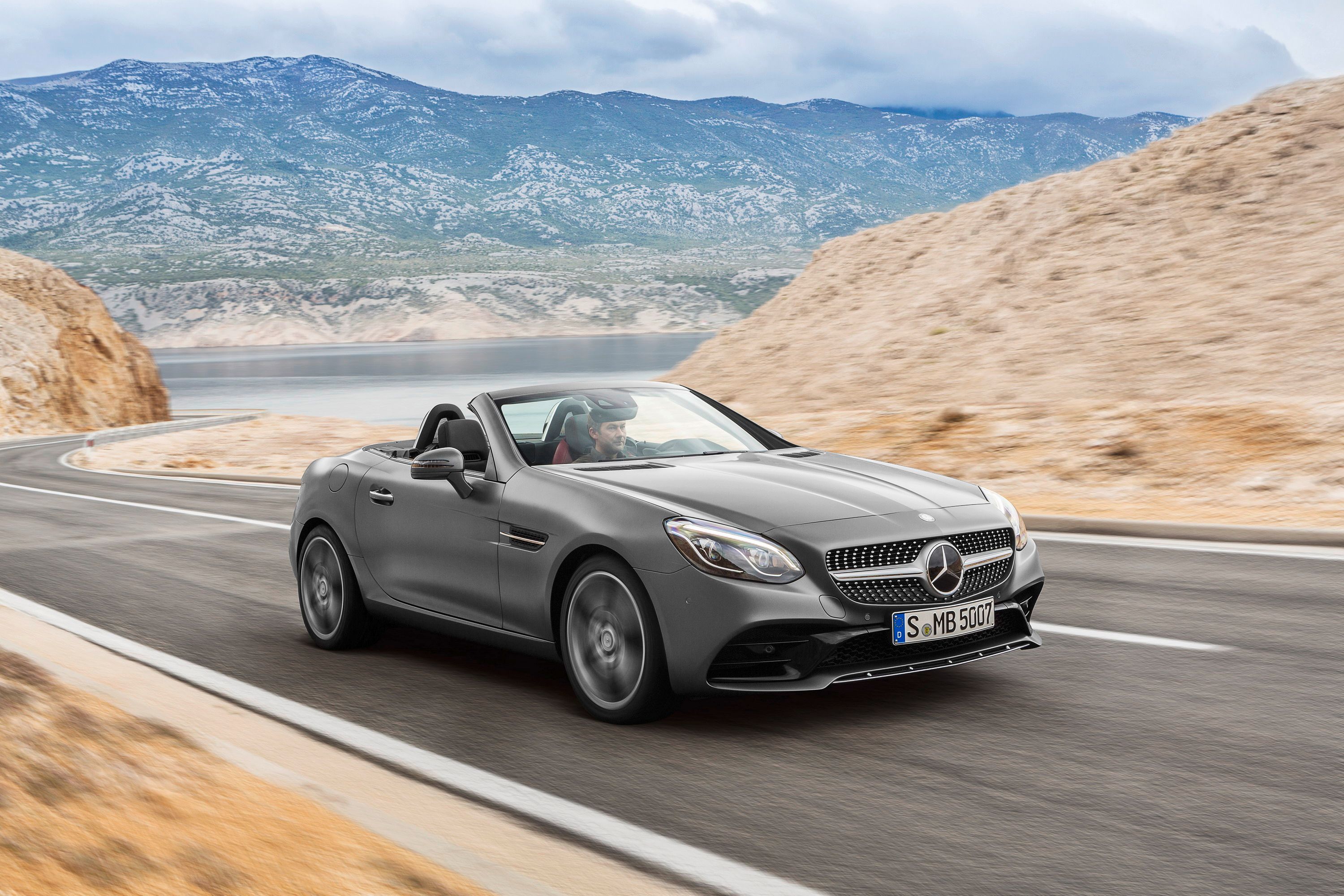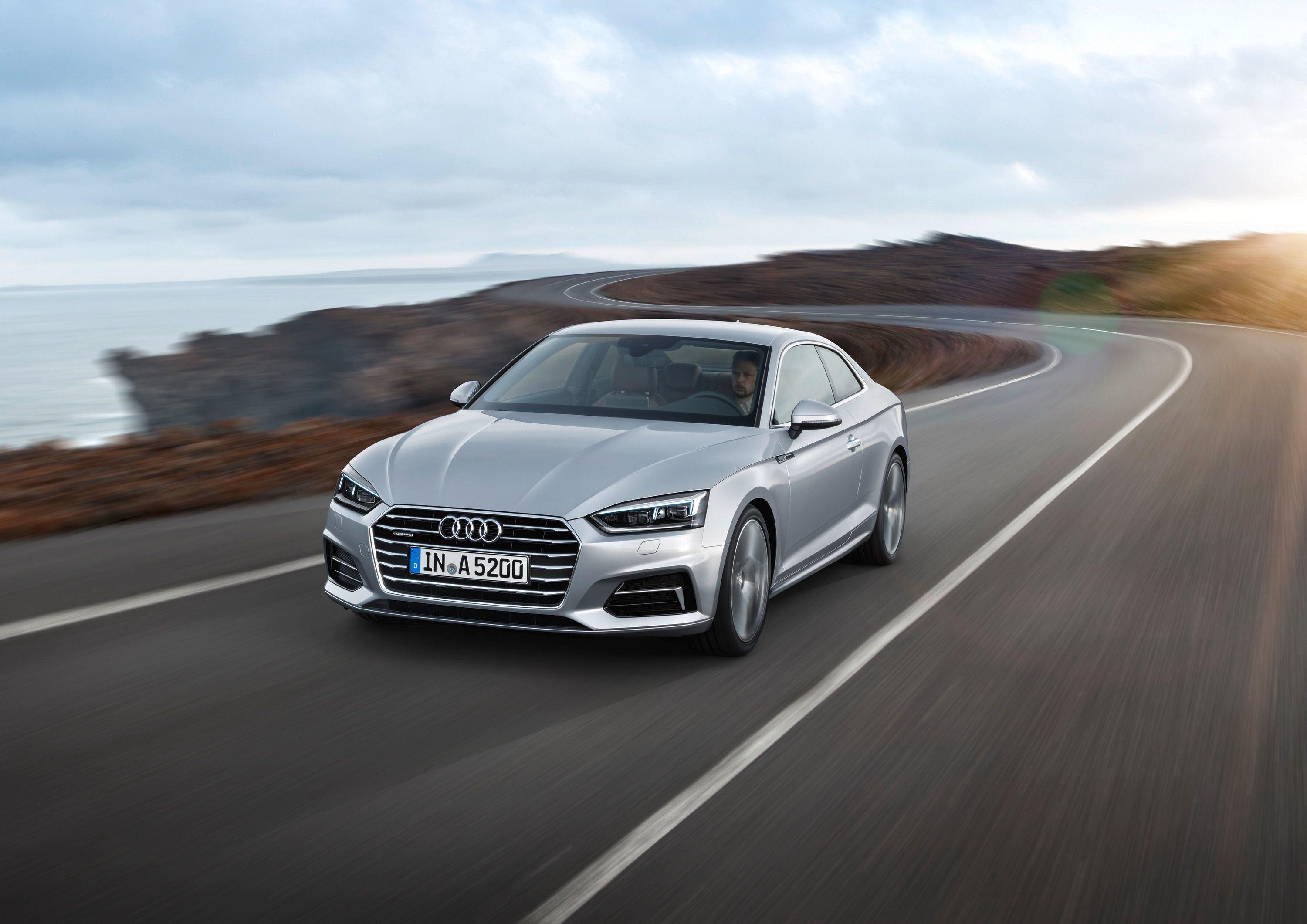Ain’t technology grand? Back in the day, it was pretty much assumed that if you were gonna have fun behind the wheel, you’d be hitting the high-test on the regular. And that was fine back in 1960 when a gallon of gas cost a quarter, but these days, things are a bit different. Luckily, internal combustion has come a long way since then, and the modern car buyer can have their cake and eat it too when it comes to mixing performance with efficiency.
As such, we’ve put together this list of sports cars that take it easy at the pump, pulling data from the government’s fuel economy website to find the best gas-sipping performance models out there. We’ve also tossed in a few of our own additions to round it out. One note - we’ve ranked ‘em solely on combined mpg figures, so read on to see where your favorite might fall.
Continue reading for the full list.
BMW i8
Unsurprisingly, the first entry on this list is a hybrid. Indeed, the i8 might look like it runs on dark matter and get 30 parsecs per gallon, but under all that sci-fi-style geometric bodywork, you’ll find a turbocharged 1.5-liter three-cylinder gas-burner driving the rear wheels, plus a single electric motor to drive the front wheels, all of which blesses the i8 with a hybrid AWD system.
Put it all together, and the setup makes as much as 369 horsepower and 420 pound-feet of torque, which can send the i8 to 60 mph in 4.2 seconds. The hybrid powertrain also comes with a number of drive modes for both cruising and aggressive driving, making the most of the available power sources no matter your mood. If it’s max efficiency that you’re after, then the i8 will yield a combined 69 MPGe, or miles per gallon-equivalent, the EPA’s metric for measuring the fuel returns of hybrid and electric vehicles. It’s also worth noting that the i8 will cover 18 miles on electric power alone, as well as 320 miles with a tank full of premium gas and a battery pack full of electrons. It’ll also return 27 mpg when running on gas power alone.
2019 BMW i3 - drivetrain specifications
|
Engine |
rear-mounted turbocharged 1.5-liter three-cylinder |
|
Electric motor |
front-mounted synchronous |
|
Engine transmission |
six-speed automatic |
|
Motor transmission |
two-speed automatic |
|
Engine output |
228 HP @ 5,800 RPM, 236 LB-FT @ 3,700 RPM |
|
Motor output |
141 HP @ 4,800 RPM, 184 LB-FT @ 4,800 RPM |
|
0-to-60 mph |
4.2 seconds |
|
Top speed |
155 mph (electronically limited) |
|
Top Speed (electric) |
75 mph |
|
All-electric range |
18 miles |
|
Range |
320 miles |
|
Estimated fuel economy |
69 MPGe |
Read our full review of the 2019 BMW i8.
Karma Revero
The Karma nameplate has been around for a while, originally making the scene in 2012 on the trunk lid of a sport hybrid that was definitely ahead of its time. Now, however, the Karma is back, and it once again combines a performance attitude with modern gas/electric hybrid fuel efficiency. This time around, though, it’s called the Karma Revero.
While half of the name might be new, the mechanical bits are more or less identical to those of the preceding Karma, including a turbocharged 2.0-liter four-cylinder internal-combustion engine, plus a duo of electric motors. Output is rated at 403 horsepower and an astonishing 981 pound-feet of torque. That’s a lot, but the Karma Revero isn’t some rip-snorting beast of a car - it still takes 5.4 seconds to hit 60 mph and 14.5 seconds to run the quarter mile, with top speed pegged at 125 mph.
However, the Karma Revero will also go 50 miles on battery power alone, as well as 300 miles with a full tank of premium gas and a fully charged battery pack. All told, the Karma Revero will manage a combined 60 MPGe while running in hybrid mode, as well as 20 mpg on gas alone.
2017 Karma Revero - drivetrain specifications
|
Engine |
turbocharged 2.0-liter four-cylinder internal-combustion engine |
|
Horsepower |
403 HP |
|
Torque |
981 LB-FT |
|
Top Speed |
125 mph |
|
0 to 60 mph |
14.5 seconds |
|
Electric range |
50 miles |
|
Range |
300 miles |
|
Fuel economy |
60 MPGe |
Read our full review of the 2017 Karma Revero.
Mazda 3 Five-Door
Now that we’ve covered the more expensive hybrid sport models out there, let’s check out something a little more down to Earth. The Mazda 3 is one of our favorite sport compact models on the market today, offering snappy good looks, solid practicality (especially with the hatchback model), and a surprising amount of fun behind the wheel.
In previous test drives, we were impressed by the 3’s crisp response, remarking that “the engine feels more powerful than its on-paper stats suggest. Dumping the throttle is met with quick revs and matching movement.” In this case, the go-maker is a naturally aspirated 2.5-liter four-cylinder producing upwards of 184 horsepower and 185 pound-feet of torque, with returns rated at a combined 30 mpg with the six-speed automatic transmission and 29 mpg with the six-speed manual gearbox. The run to 60 mph takes 7 seconds flat.
If you’re looking for even more frugality at the pump, the lower trim levels come with a naturally aspirated 2.0-liter ‘four making 155 horsepower and 150 pound-feet of torque, boosting fuel returns to a combined 32 mpg with the automatic transmission, and 31 mpg with the manual. The sprint to 60 mph takes 7.8 seconds.
Both engines run on regular 87-octane fuel.
2018 Mazda 3 Drivetrain Specifications
|
Engine Type |
Type-SKYACTIV-G 2.0L DOHC 16-valve 4-cylinder with Variable-Valve Timing |
Type-SKYACTIV-G 2.5L DOHC 16-valve 4-cylinder with Variable-Valve Timing |
|
Horsepower (SAE net) |
155 HP @ 6000 RPM |
184 HP @ 5700 RPM |
|
Torque (lb.-ft.) |
150 LB-FT @ 4000 rpm |
185 LB-FT @ 3250 rpm |
|
EPA Mileage (City / Highway / Combined) |
26 / 35 / 30 |
29 / 39 / 32 |
Read our full review of the 2016 - 2018 Mazda 3.
Hyundai Veloster
Slotting in as Hyundai’s funky and fun-loving sport compact model, there’s a lot to like about the Veloster. Let’s start outside, where we find a slick hatchback body style that’s sure to turn a few heads out on the street. The Veloster also uses a unique door layout, with one door on the driver’s side, and two doors on the passenger’s side, giving it a bit of a dual coupe/wagon personality.
Mounted up front, the base model Veloster comes equipped with naturally aspirated 2.0-liter four-cylinder, which sends 147 horsepower and 132 pound-feet of torque to the front wheels, returning as much as 30 mpg in the process (the manual transmission returns 28 mpg). If more power is what you’re after, there’s also a turbo model equipped with a boosted 1.6-liter four-cylinder doling out 201 horsepower and 195 pound-feet of torque, good enough for a run to 60 mph in 6.2 seconds and a top speed of 145 mph. The Turbo will also return a combined 30 mpg with a seven-speed dual-clutch transmission, or 29 mpg with a six-speed manual.
Both engines consume regular 87-octane fuel.
2019 Hyundai Veloster Drivetrain Specifications
|
Hyundai Veloster 2.0 |
Hyundai Veloster Turbo |
|
|
Engine |
Nu 2.0 MPI Atkinson cycle 4-cylinder |
Gamma 1.6 Turbo GDI 4-cylinder , DOHC |
|
Horsepower |
147 @ 6,200 rpm (est.) |
201 @ 6,000 rpm (est.) |
|
Torque (lb-ft) |
132 @ 4,500 rpm (est.) |
195 @ 1,500~4,500 rpm (est.) |
|
Fuel economy city/highway/combined |
25/33/28 MT |
- |
Read our full review on the 2019 Hyundai Veloster.
Fiat 500 Abarth
If you consider yourself to be somewhat style conscious, then the Fiat 500 Abarth might be the one for you. This thing just drips with good taste, from its rounded profile and attractive fascia, to the myriad options offered for both the exterior and interior specs.
And while it’s admittedly quite adorable and tiny, the Fiat 500 Abarth still manages to pack a decent punch when you plant your foot. That’s because this Italian three-door city car gets its nosed crammed with a turbocharged 1.4-liter four-cylinder engine, which, thanks to Abarth (Fiat’s performance tuning division), spins its way to 160 horsepower and 170 pound-feet of torque when mated to a five-speed manual transmission.
Properly applied at the front wheels, it’s enough to rocket the plucky little hatch to 60 mph in less than 7 seconds, with top speed pegged at 129 mph. What’s more, thanks to a curb weight rated at just 2,512 pounds, the 500 Abarth’s sport-tuned suspension has no problem eating up the corners.
The low weight also helps the three-door sip the premium gas, returning a combined 30 mpg with the stick shift transmission. Opt into the automatic, and you’ll see around 27 mpg combined.
2015 Fiat 500 Abarth - Drivetrain Specifications
|
Engine |
1.4-liter Turbocharged 16-valve I-4 With Belt-Driven SOHC And MultiAir CVVT |
|
Transmission |
5-Speed Manual/six-speed automatic |
|
Powertrain Layout |
Front-engine, Front-drive |
|
Power (HP @ RPM) |
160 @ 5,500 |
|
Torque (LB-FT @ RPM) |
170 @ 2,500 |
|
0-60 mph (seconds) |
6.9, est |
|
Top Speed (mph) |
129 mph |
|
EPA Fuel Economy MPG (City/Highway/Combined) - Manual |
28/34/30 |
Read our full review on the 2015 Fiat 500 Abarth.
Mazda MX-5
No doubt about it - the Mazda MX-5 is an absolutely legendary roadster. With nearly three decades of experience to fall back on, the latest fourth-gen ND model line offers even more polish to the nameplate’s already world-class driving engagement.
That’s because Mazda did it right, focusing primarily on refining the suspension and chassis components. After driving the 2017 RF model, we described the MX-5 as “therapy for the driving enthusiast,” adding, “Its like the perfect date - they are safe and won’t smash your heart to bits, but they’re smokin’ hot and are a blast to be around.”
Critically, the ND also manages to cut even more heft from the car’s feathery curb weight. And as we all know, less weight makes everything better.
That includes the performance, which stops the clocks at just over 6 ticks in the run to 60 mph. Making it all happen is a naturally aspirated 2.0-liter four-cylinder running on premium gasoline, which is tuned to produce 155 horsepower and 148 pound-feet of torque. Power is sent to the rear wheels by way of either a six-speed manual or a six-speed automatic.
Go for the stick shift, and you’ll see a combined 29 mpg, while the automatic ‘box ups that figure to 30 mpg.
2016 Mazda MX-5 drivetrain specifications
|
Engine |
2.0-liter SKYACTIV-G inline four-cylinder engine |
|
Transmission |
SKYACTIV-MT and SKYACTIV-DRIVE six-speed automatic |
|
Max. output |
155 HP |
|
Max. torque |
148 LB-FT |
|
Fuel economy (city/highway/combined) |
26/35/29 |
Read our full review of the 2016 Mazda MX-5.
Alfa Romeo 4C
Speaking of a pure driving experience, the Alfa Romeo 4C is another of those undiluted four-wheel bliss-makers us enthusiasts are always droning on about. Created as a mid-engine Italian sports car that won’t break the bank, the 4C ticks all the boxes you’d expect - gorgeous styling, faultless handling, a rev-tastic engine package, a stripped-down attitude, and oodles of carbon fiber.
In addition to keeping things stiff, the carbon also helps to shave weight, and as a result, the 4C manages to tip the scales at a dainty 2,465 pounds. Not too shabby, especially when you consider the 4C’s turbo 1.8-liter four-cylinder whips out as much as 237 horsepower and 258 pound-feet of torque. Premium gas is required at fill-ups.
Routed to the rear wheels through a six-speed dual-clutch automatic transmission, the 4C manages a sprint to 60 mph in 4.2 seconds, topping out at an estimated 160 mph.
That’s quick, no matter how you measure it, but impressively, the 4C will also return a combined 28 mpg. For a car that looks this good and goes that well, that’s just icing on the cake.
2016 Alfa Romeo 4C - drivetrain specifications
|
Engine |
Inline 4-cylinder, liquid-cooled with turbocharger, intercooler and wet sump |
|
Power (SAE net) |
237 HP @ 6,000 RPM (136 bhp/liter) |
|
Torque (SAE net) |
258 LB-FT @ 2,200 - 4,250 RPM |
|
Top Speed |
160 mph |
|
0 to 60 mph |
4.2 seconds |
|
Fuel economy city/highway/combined |
24/34/28 |
Read our full review of the 2016 Alfa Romeo 4C Spider.
Mercedes-Benz SLC 300
Luxury and unlimited headroom usually pair quite well together, and the SLC 300 roadster is one very fine example of that. Offered as an evolution of the preceding Mercedes-Benz SLK, the SLC offers more aggression in the styling department, plus the same folding hardtop roof for those times when top-down motoring is deemed inappropriate.
Despite the complicated roof and top-shelf interior appointment, the compact and sporty SLC is also surprisingly fuel efficient. Mounted up front is a turbocharged 2.0-liter four-cylinder powerplant, which burns premium gas and mates to a nine-speed automatic transmission. Power is sent to the rear wheels, with peak output rated at 241 horsepower and 273 pound-feet of torque.Top speed hits the traps at 130 mph, while 60 arrives in 5.7 seconds.
Put it all in the appropriate Eco driving mode, and you’ll get returns around a combined 27 mpg. Not bad for a roadster decked out in leather, high-end infotainment, and other such goodies.
2017 Mercedes-Benz SLC 300 - drivetrain specifications
|
Engine |
2.0-liter four-cylinder |
|
Rated output |
241 HP @ 5,500 RPM |
|
Rated torque |
273 LB-FT @ 1300-4000 RPM |
|
Acceleration 0-60 (s) |
5.7 seconds |
|
Top speed |
130 MPH |
|
Fuel economy combined |
27 mpg |
Read our full review of the 2017 Mercedes-Benz SLC.
Audi A5 quattro
The Audi A5 quattro is another standout model on this list, and not just for its sharp exterior styling. Rather, we like this one for its standard AWD system, something that’s pretty rare when it comes to frugal gas-sippers (unless, of course, you’re talking about a gas/electric hybrid that also costs an arm and a leg. You know, like the BMW i8).
Indeed, Audi managed to keep mpg figures high despite the added grip of AWD. That’s because it included something called “ultra technology,” which automatically adjusts torque levels between the front and rear axles based on driver inputs and the given driving conditions. If more grip is needed, ultra will engage both the front and the rear axles. Alternatively, if just two driven wheels will suffice (such as when you’re cruising on the highway on a bright and sunny day), the tech will disengage the AWD system, thus cutting back on parasitic drivetrain loss and upping fuel returns.
Up front, the Audi A5 quattro mounts a turbocharged 2.0-liter four-cylinder engine that takes premium gas. Routing the muscle is either a six-speed manual transmission, or a seven-speed S tronic dual-clutch automatic. The six-speed stick shift is the transmission to get if you want the ultra tech, as it provides a combined 27 mpg at the pump. Impressively, the seven-speed also offers upwards of a combined 27 mpg, despite the fact it doesn’t get the ultra tech.
2017 Audi A5 drivetrain specifications
|
Engine |
2.0-liter inline four-cylinder |
|
Horsepower |
252 HP @ 5,000—6,000 RPM |
|
Torque |
273 LB-FT @ 1,600—4,500 RPM |
|
Top Speed |
130 mph |
|
Fuel economy city/highway/combined |
24/34/27 |
Read our full review of the 2017 Audi A5 quattro.
Subaru BRZ and Toyota 86
|
|
ids=694609,689828 |
no_overlay=true> |
Note: Subaru BRZ pictured on the left, Toyota 86 pictured on the right.
We decided to combine the Subaru BRZ and Toyota 86 into a single entry here because, well, if you take off the badges, they’re pretty much exactly the same. Both offer lightweight, front-engine, RWD handling characteristics, with just enough power on tap to make it interesting.
Mounted under the hood of both these machines is a naturally aspirated 2.0-liter boxer four-cylinder engine, which is tuned to produce 205 horsepower and 155 pound-feet of torque. Both also run on premium gas, and both use either a six-speed manual transmission or a six-speed automatic with shift paddles to send power to the rear wheels. Put your foot down, and 60 mph arrives in a little over 6 seconds, while top speed is rated at roughly 135 mph.
Indeed, the BRZ/86 twins won’t blow you away with their neck-snapping acceleration, but that’s not the point. Rather, you’ll find the point on a stretch of curvy backroad, a place where you can start to explore the cars’ superb corner carving agility. When we drove the 86, we found that the “chassis dug into the pavement with astounding composure. Unlike other sports cars, the 86 doesn’t cheat its way to confidence with oversized, uber-sticky rubber. Instead, the whole handling package was polished and honed to a gleaming finish.”
Not bad, eh? Well, as a cherry on top, both vehicles also come with fuel returns estimated at a combined 27 mpg when equipped with the automatic transmission.
2017 Subaru BRZ and Toyota 86 Drivetrain Specifications
|
Engine |
2.0-liter, 4-cylinder, boxer |
|
Horsepower |
205 hp @ 7,000 rpm (SAE NET) (A/T – 200 hp @ 7,000 rpm) |
|
Torque |
156 lb-ft @ 6,400 rpm (A/T – 151 lb-ft @ 6,400 rpm) |
|
EPA Estimated Fuel Economy (city/highway/combined MPG) |
21/28/24 (6-Speed M/T) |
Read our full review of the 2017 Subaru BRZ.
Read our full review of the 2017 Toyota 86.
Conclusion
So then, what did we learn from this exercise? Well, looking over the above list, one thing becomes clear - you don’t necessarily need to sacrifice fuel efficiency to have fun behind the wheel. Rather, if you want a sports car that can skip on the refuels, any one of the above selections should fit the bill, from the economical Fiat 500 Abarth, to the high-tech i8, to the luxurious Audi A5 quattro, to the epic Mazda MX-5 and BRZ/86 twins.
Which would you rather have?

